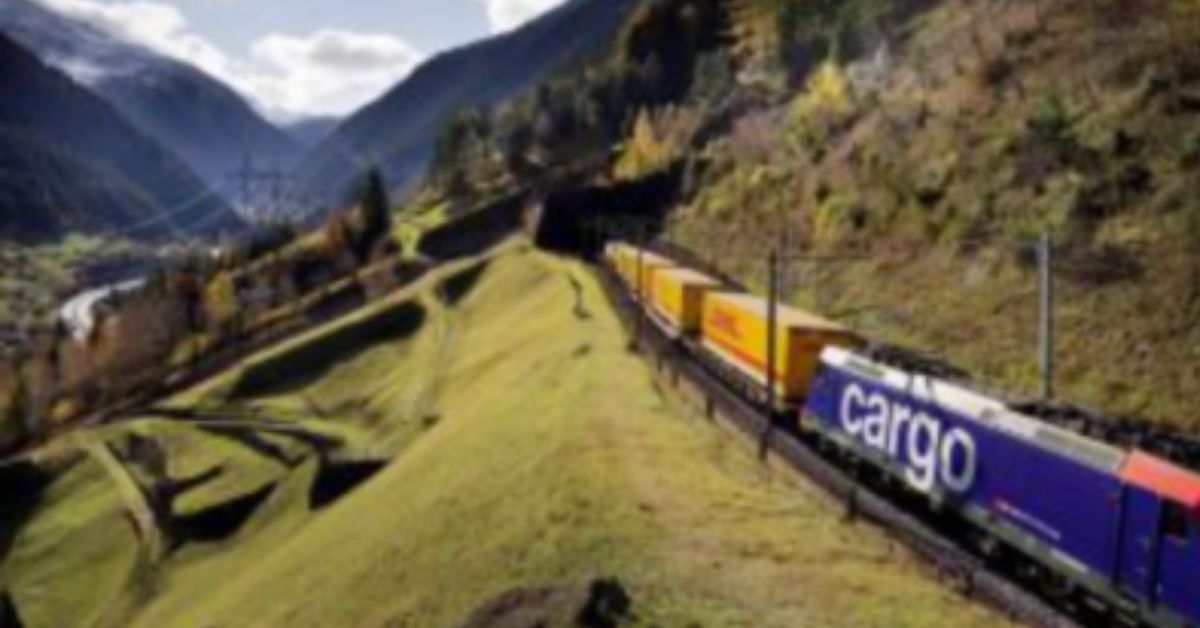Last week, RailFreight.Com reported that two 40-ft containers of wood laminate sheets crossed the Caspian Sea from Russia’s Astrakhan port, entered Iran’s Anzali port, continued their southward journey towards the Arabian Sea, entered the waters at Bandar Abbas and eventually reach Nhava Shiva port in Mumbai. The journey signalled the launch of the International North South Transport Corridor (INSTC), a 7,200-km multi-modal transport corridor that combines road, rail and maritime routes connecting Russia and India via central Asia and Iran. The corridor is expected to consolidate the emerging Eurasian Free Trade Area.
What INSTC will do
The INSTC’s launch provides missing pieces of the puzzle about India’s refusal to condemn Russia’s invasion of Ukraine. India’s decision had then been explained in terms of its military reliance on Russia, its aim to keep open alternative supplies of precious oil and gas, and a legacy of its non-alignment. What was neglected is India’s brewing investment in transcontinental infrastructure, signalled by its involvement in the INSTC alongside Russia and Iran, both of which are subject to sanctions by Western governments.
The legal framework for the INSTC is provided by a trilateral agreement signed by India, Iran and Russia at the Euro-Asian Conference on Transport in 2000. Since then Kazakhstan, Belarus, Oman, Tajikistan, Azerbaijan, Armenia and Syria have signed instruments of accession to become members of the INSTC. Once fully operational, the INSTC is expected to reduce freight costs by 30% and journey time by 40% in comparison with the conventional deep sea route via the Suez Canal. Indeed, the need for an alternative route was deeply felt last year, when the Ever Given container ship was stuck in the Suez, halting maritime traffic between the Mediterranean Sea and the Red Sea.
India’s investment in the INSTC is exemplified by its involvement in Iran’s Chabahar port and the construction of a 500-km Chabahar-Zahedan railway line. Once completed, this infrastructure will allow India access to Afghanistan and central Asia, a prospect strengthened by the Taliban government’s support for the project. The India Ports Global Limited, a joint venture between the Jawaharlal Nehru Port Trust and Kandla Port Trust, will develop the port along with Iran’s Aria Banader. IRCON International will contribute to constructing the railway line. A special economic zone around Chabahar will offer Indian companies the opportunity to set up a range of industries; for example, NALCO proposes to set up an aluminium smelter. Lines of credit will be extended to Iran by Exim Bank. The INSTC, thus, provides an opportunity for the internationalisation of India’s infrastructural state, with state-run businesses taking the lead and paving the way for private companies.
Non-alignment to multi-alignment
For India, the INSTC achieves several things all at once. Firstly, India can now bypass Pakistan to access Afghanistan, central Asia and beyond. Second, the INSTC can shape a north-south transport corridor that can complement the east-west axis of the China-led Belt and Road Initiative (BRI).
The launch of the INSTC was overshadowed by the Quad Summit held in May 2022 at which the leaders of the Quad re-emphasised the principles of a free and open Indo-Pacific. The Quad Summit declaration went beyond outlining commitments to freedom, rule of law and territorial integrity to reinforce a central purpose of the collective — providing the region with public goods. New initiatives designed to deepen cooperation across the region were announced, which encompassed maritime security, climate change and regional infrastructure.
India’s founding role in both the INSTC and the Quad exemplify its departure from non-alignment to multi-alignment. The INSTC offers a platform for India to closely collaborate with Russia, Iran and Central Asian republics. That two of its partners are subject to Western sanctions hasn’t prevented India from collaborating with the U.S., Japan and Australia as part of the Quad to create and safeguard a free and open Indo-Pacific. Indian policymaking in international affairs has often been criticised for its moral indecisiveness, diplomatic reticence and ideological confusion. These critics have failed to observe the subtle shifts in Indian foreign policy from non-alignment to multi-alignment.
The INSTC has received far less media attention than initiatives such as the Quad, the BRI and the New Development Bank. However, as a transcontinental multi-modal corridor that aims to bring Eurasia closer together, the INSTC is a laudable initiative in its own right. That it helps India consolidate its multi-alignment strategy sweetens the deal.
Indrajit Roy is Senior Lecturer-Global Development Politics, Department of Politics, University of York








